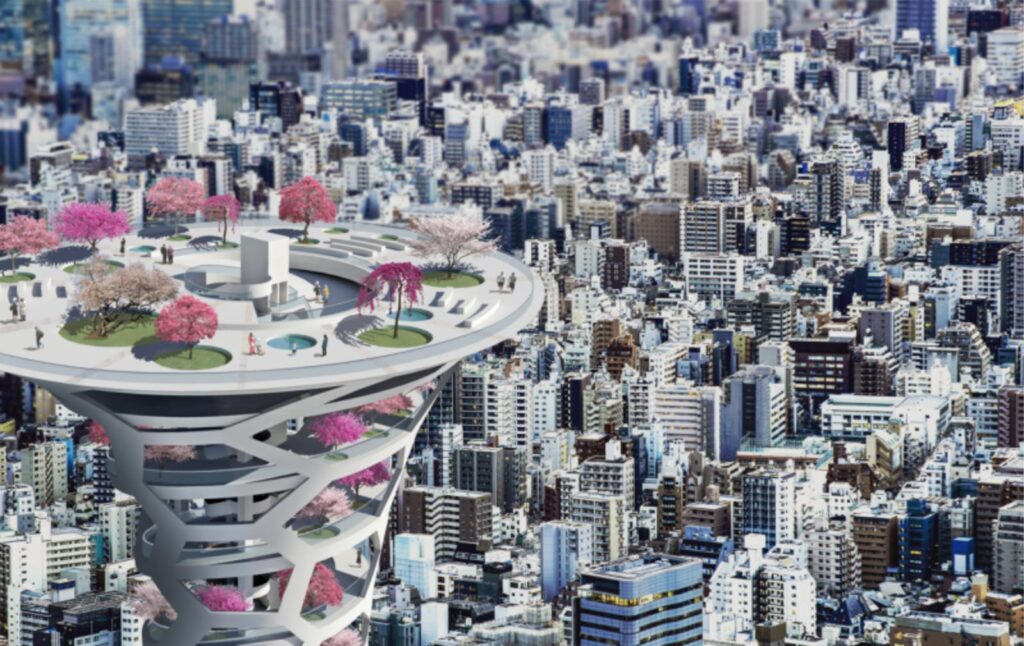Green filter towers by Saverio Adriano Marchisciana

Today, Japan is the second most urbanised country in the world, with 93% of its land area built over. Already several decades ago, urban planners were talking about a Japanese megalopolis, speculating that in the future the major cities on the east coast of the country would merge into a single immense city, the megalopolis of ‘Tōkaidō’.
Tokyo is now the second most populated city on the planet, and is also one of the cities that has become most saturated with buildings. The lack of any remaining space means that the cost of urban land for construction is increasing disproportionately, which in turn is affecting house prices.
Image © Saverio Adriano Marchisciana
As a result of this complicated cost-benefit mechanism, the onerous initial costs are pushing developers to maximise the permitted floor area for new construction, whilst at the same time building higher and higher. In the enormous urban expanse that now surrounds Tokyo Bay, green spaces are very rare.
Like tiny oxygen-producing lungs, these minuscule green areas cannot compensate for the mass of CO2 that the city generates. If we could build towers that contain vertical urban parks, grafted into hyper-urbanised cities like Tokyo, we could create meaningful places of relaxation where people would be able to purify themselves, away from the chaos and frenzy of everyday life, whilst admiring views of the majestic Mount Fuji and the Japanese Alps.
Image © Saverio Adriano Marchisciana
In such places they would be able to rediscover a natural world – a world that is necessary for spiritual and mental rebalancing – which, as the tower rises, becomes more and more remote from the city below. These vertical public parks would also have an important role as green filter towers that would be able to perform an ecological function by transforming CO2 into oxygen.
A typical tower would be supported by an internal load-bearing structural core containing the stairs and lifts. Around this central core a single helical ramp, which would be walkable, could be planted with cherry, almond, and bonsai trees, like a large traditional Japanese garden.
Image © Saverio Adriano Marchisciana
Wrapped around the outside of the ramp, a self-supporting shell façade consisting of large hexagonal openings would enable air and sunlight to enter. At the bottom of the tower, on the ground floor, the entrance would feature a small pond containing a water garden.
This green filter tower, rising over the city, would emerge from the earth like a giant arm reaching upwards, colonised by plants and birds as a corner of paradise ready to stand against the spread of global urbanisation that is corroding the earth. Source and images Courtesy of Saverio Adriano Marchisciana.
Image © Saverio Adriano MarchiscianaImage © Saverio Adriano MarchiscianaImage © Saverio Adriano MarchiscianaImage © Saverio Adriano MarchiscianaImage © Saverio Adriano MarchiscianaScheme





